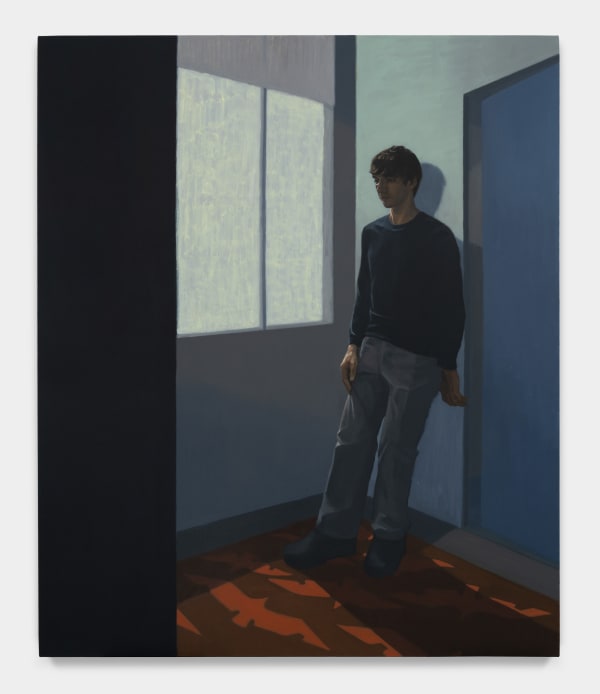Yuri Yuan: A Thousand Ships
Make Room Los Angeles is proud to present A Thousand Ships, artist Yuri Yuan’s second solo exhibition, featuring fifteen of the artist's latest works. The exhibition will be on view from December 16 through February 2, 2024.
A Thousand Ships borrows its name from Natalie Haynes' book of the same title, which reimagines Homer’s Iliad from the perspective of the women whose lives were altered by the Trojan War. Although the Greeks won the war after taking the city of Troy, they encountered numerous obstacles on their decade-long trip home. All but one of their ships – that of King Odysseus – was destroyed in a wreck. The exhibition, like Haynes’ novel, explores the physical and metaphorical distances between where we are and what we long for.
Yuan probes her subjects’ psychology in the moments leading up to events of heightened emotion. Her figures exist in in-between states and spaces: between loneliness and connection, anticipation and arrival, the foreign and the familiar. In choosing not to portray the actual encounter, Yuan allows viewers to interpret her figures’ anxiety and pensiveness. A Thousand Ships calls into question which moments warrant memorialization in a painting.
“Whether it’s trying to return home after a period away or trying to understand another person, we can never completely close these gaps,” said Yuan. “Throughout the exhibition, you’ll see figures in the act of contemplation and anticipation.” Yuan’s paintings address the urgent questions of our time through her richly layered artistic process. Utilizing a variety of visual techniques and languages, she creates complex compositions that speak to the complexities of human emotion and experience.
Influences from both Yuan’s own life and art history are woven throughout her work. Artists, like Jules Breton, are referenced directly: Anywhere the Wind Blows (After Jules Breton) borrows from Breton’s painting The Song of the Lark. Others’ influence is more subtle, informing a work’s mood or backstory.
Wrecker, a painting inspired by J.M.W. Turner’s Wreckers Coast of Northumberland, Yuan references the 19th-century myth of the “wrecker,” a person who lures ships to the coast to rob their crews. The work illuminates the cognitive distance that can exist between our imagined salvation and the reality of our downfall.
Melancholy, solitude, and longing are recurring themes across all of Yuan's paintings. A Thousand Ships includes Yuan’s largest work to date, the triptych Nothing New Under the Sun, which features three distinct but thematically linked panels. The work shows Yuan exploring a new color palette – yellow and orange rather than the blue tones that dominate other works. The exhibition also pairs several of Yuan’s larger paintings with smaller, related pieces. These smaller works function as annotations or footnotes, offering a richer understanding and adding context to their larger counterparts. Together, these works support Yuan’s layered examination of movement, time, and the profound distance that separates a person and the object of their longing.
-

The five artists I discovered at Frieze in London whose names I should note down right away
15 October 2024Los Angeles-based Make Room Gallery presents a series of new oil paintings by Chinese artist Yuri Yuan . Combining imagination and observation, Yuri’s landscapes explore...Read more -

Take an artistic voyage from Troy to Bahia with these shows inspired by history
Yuri Yuan in Los Angeles Times 10 January 2024Voyage through Yuri Yuan’s latest works in her latest gallery exhibition titled “A Thousand Ships.” The show pulls from Natalie Haynes’ book of the same...Read more











